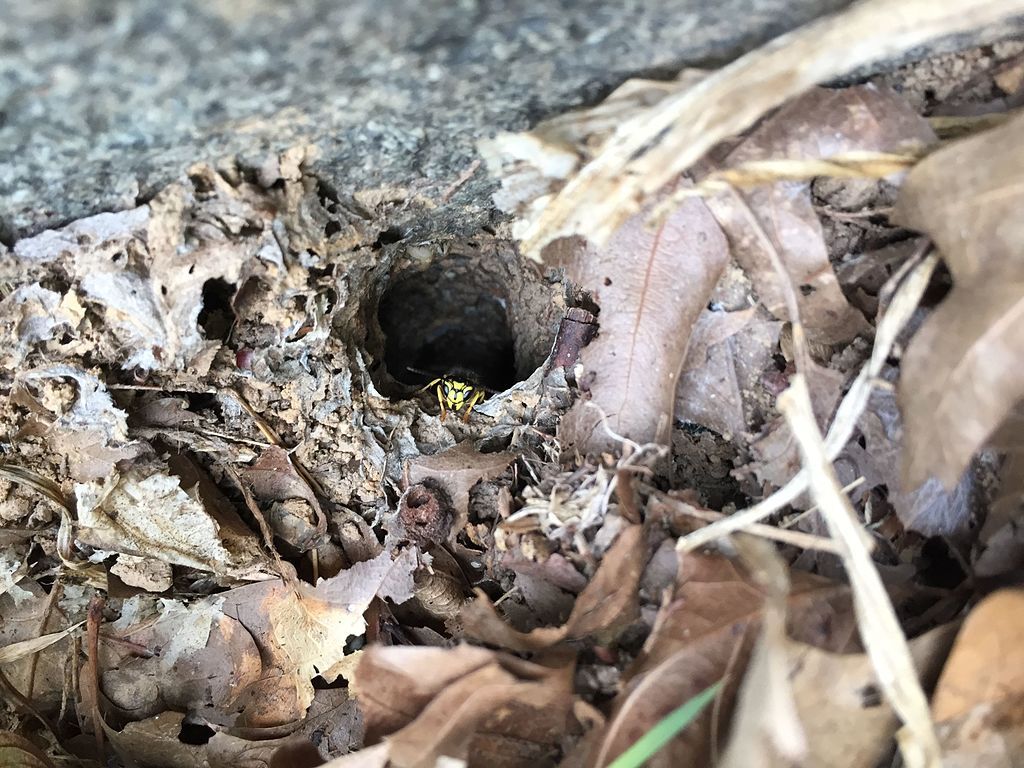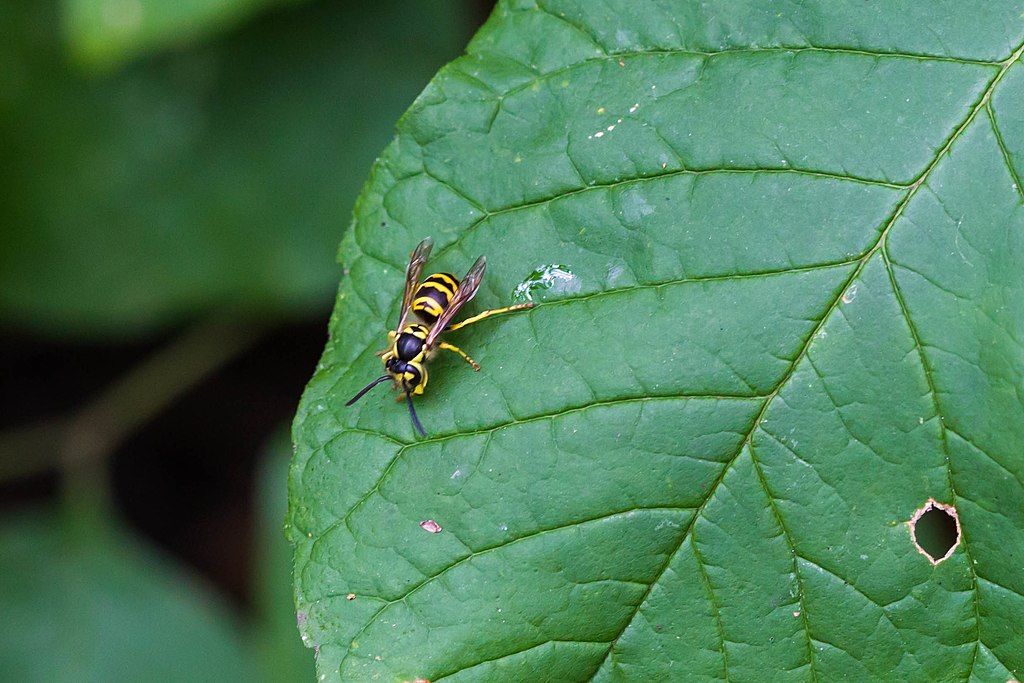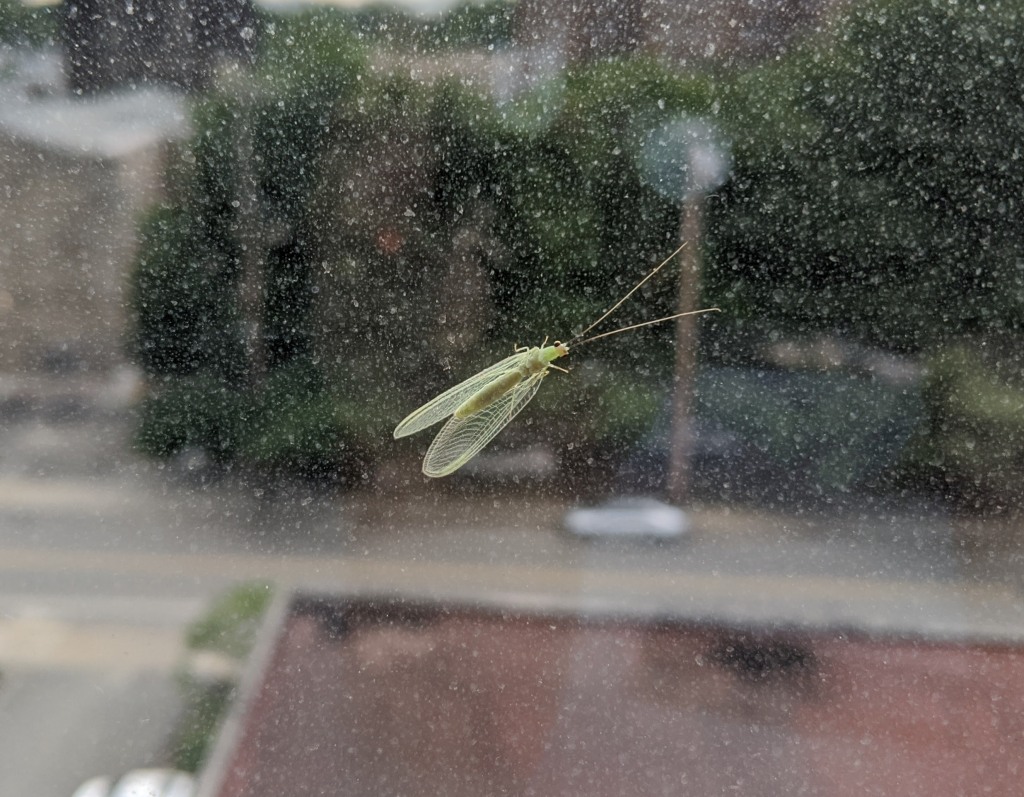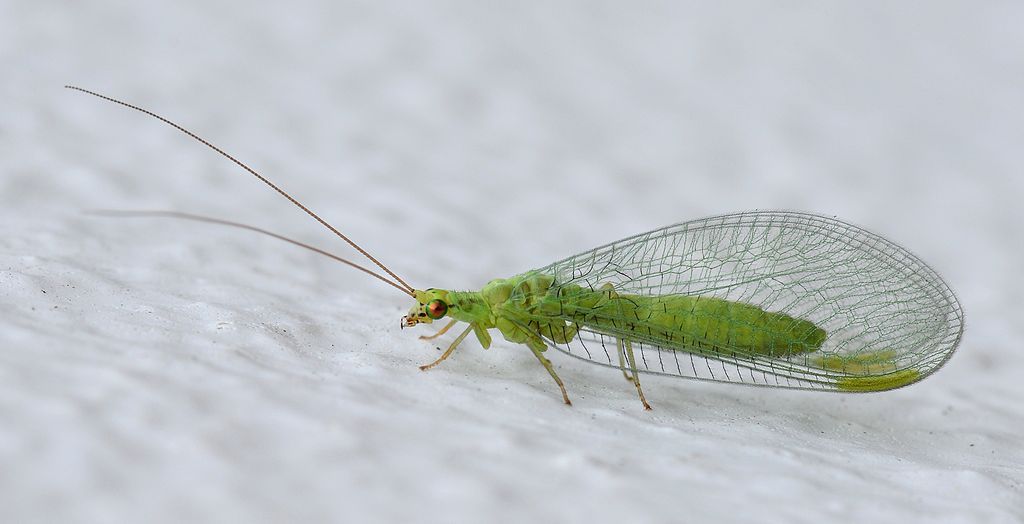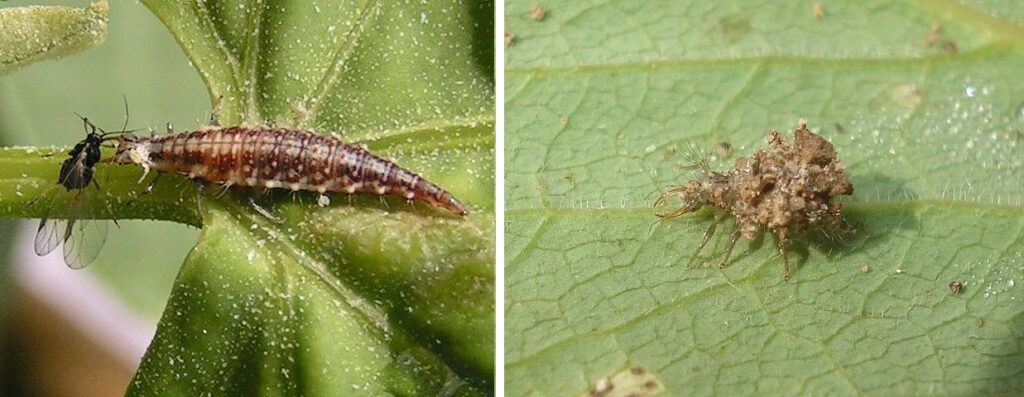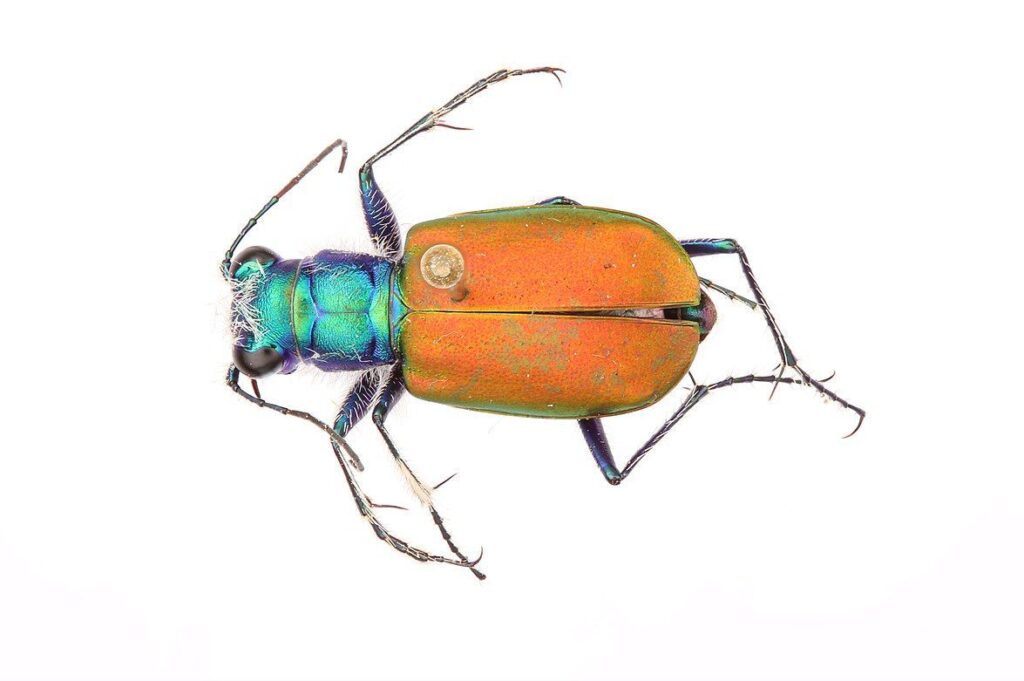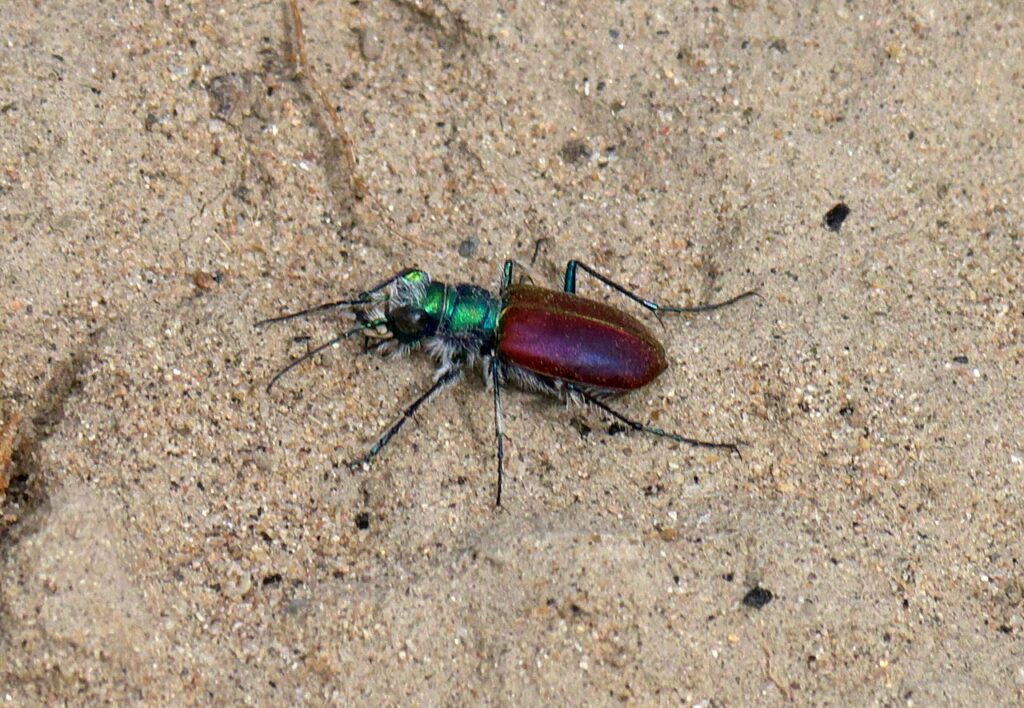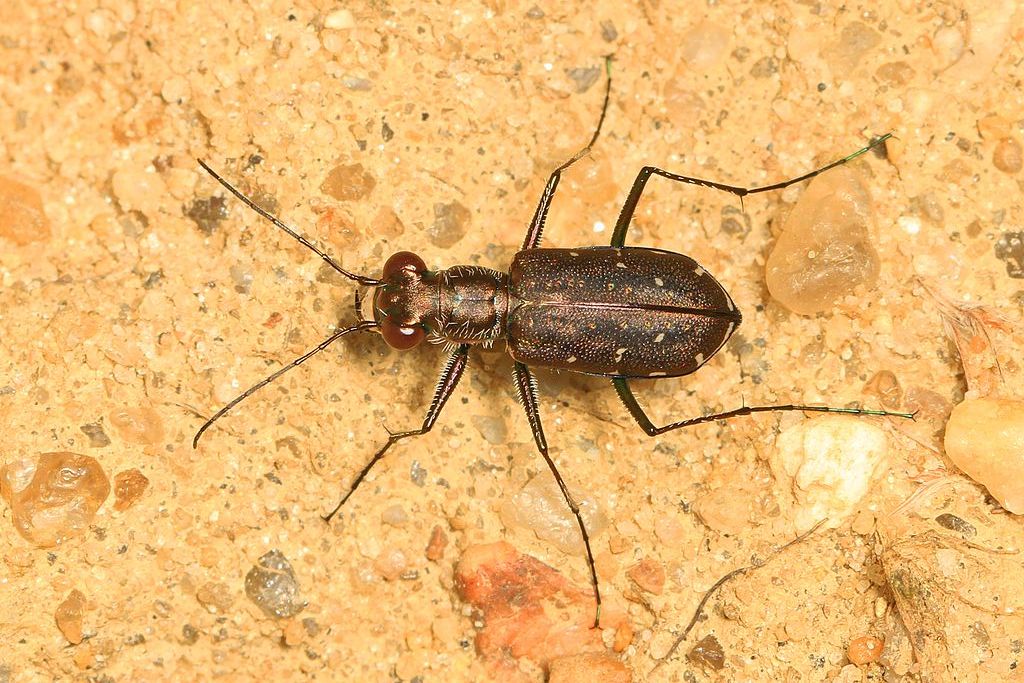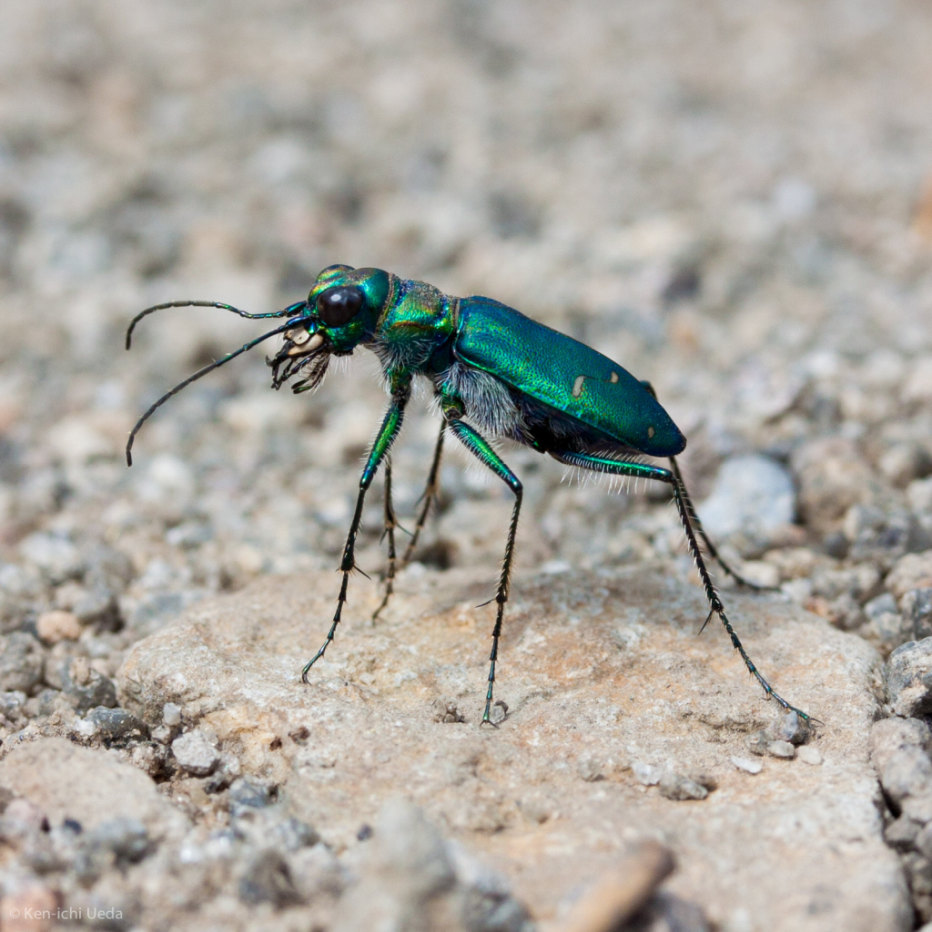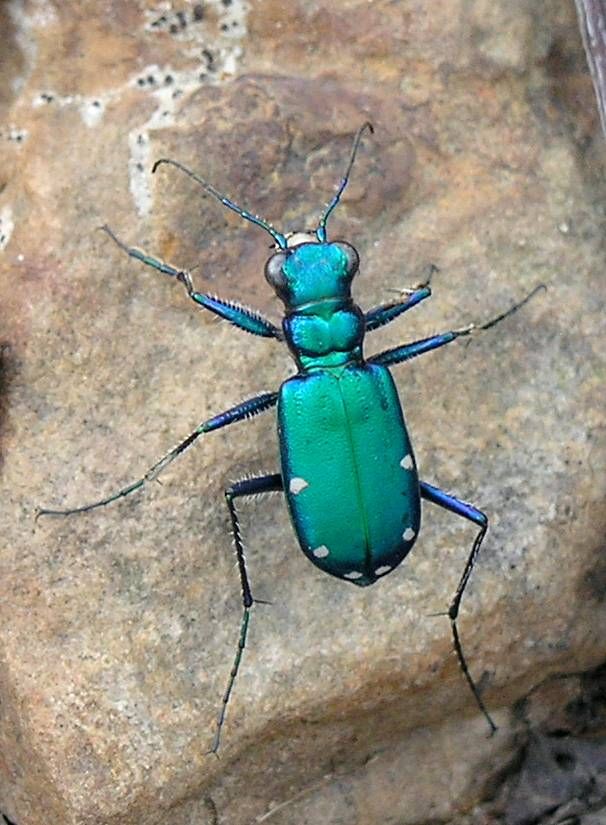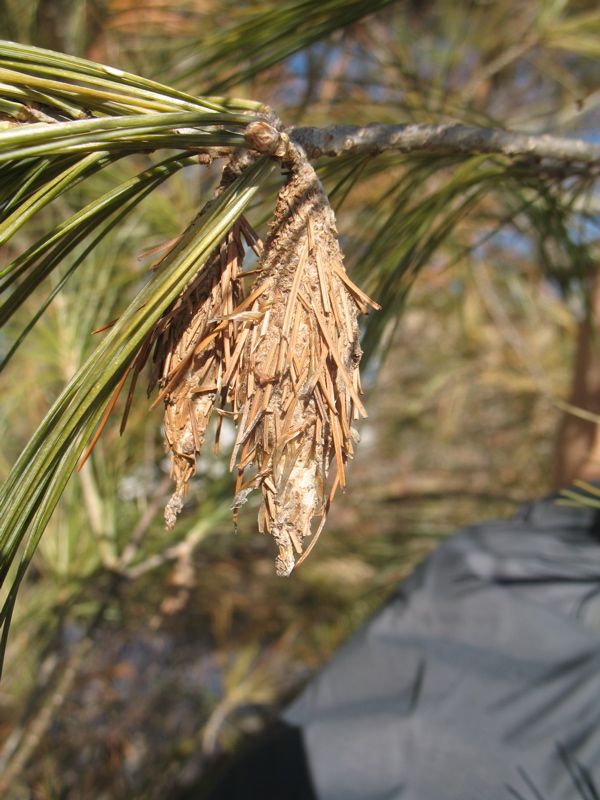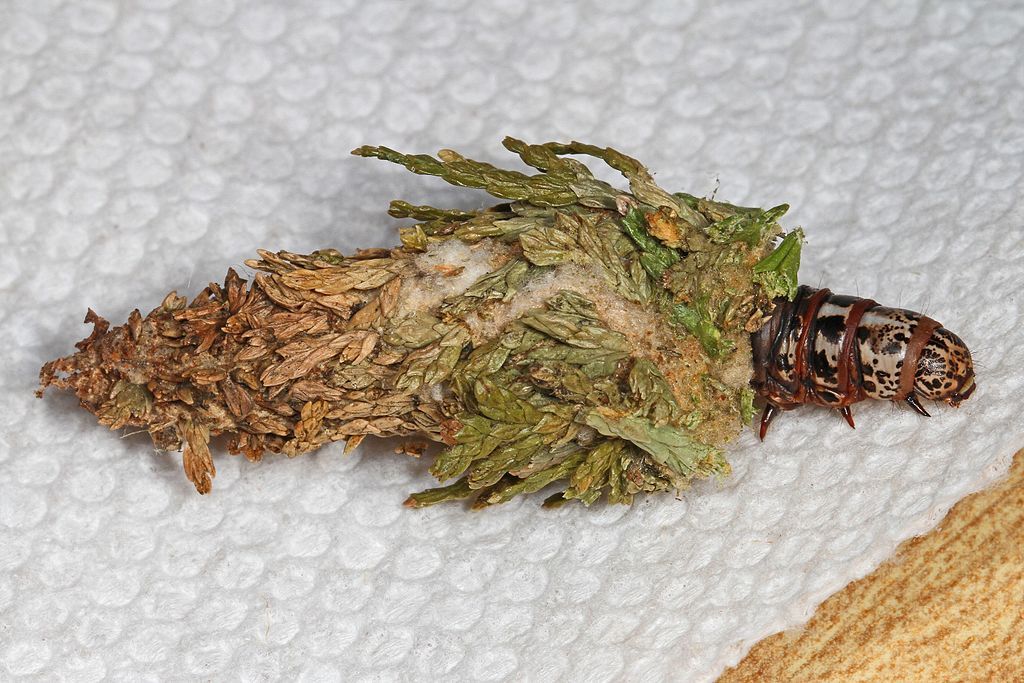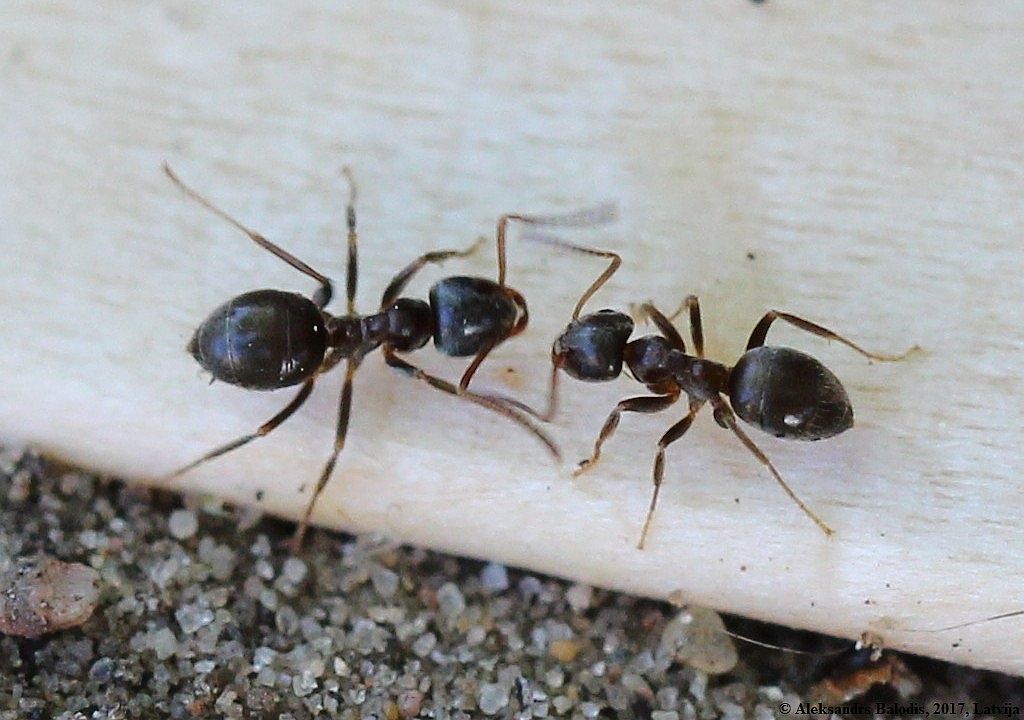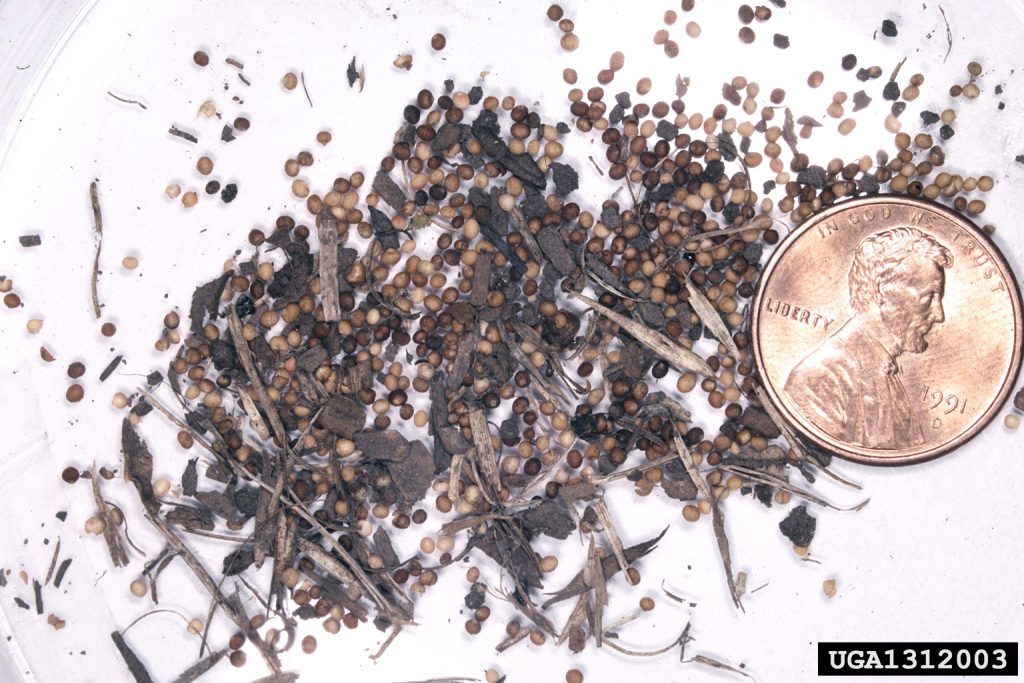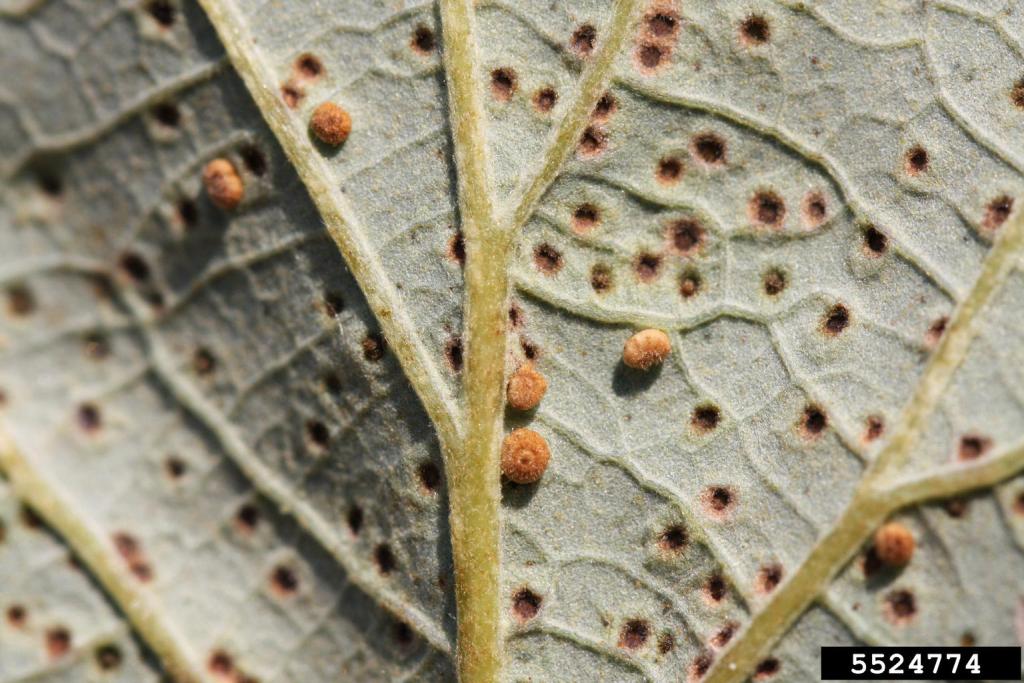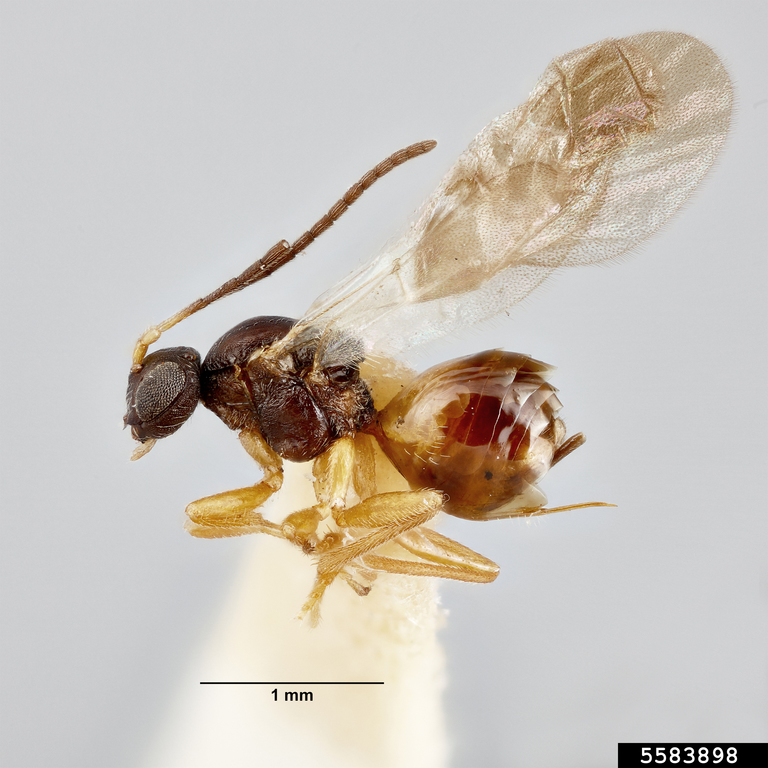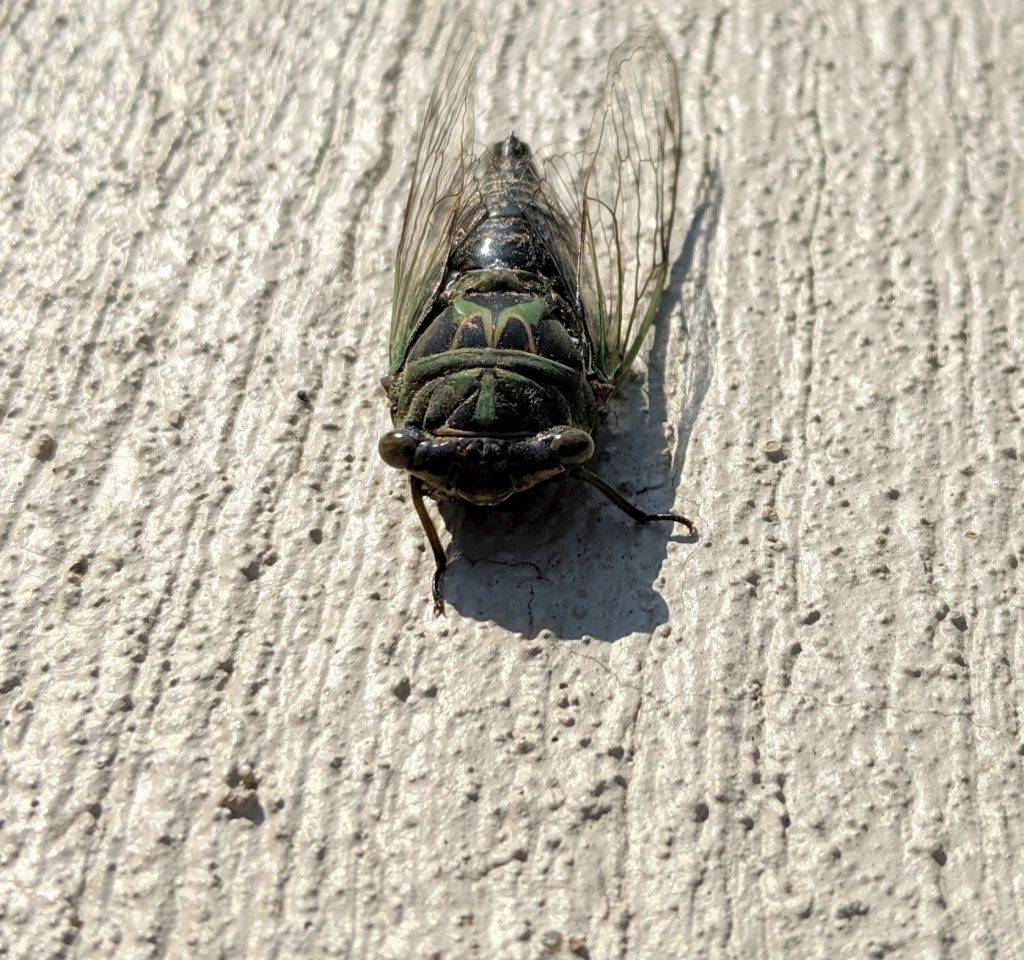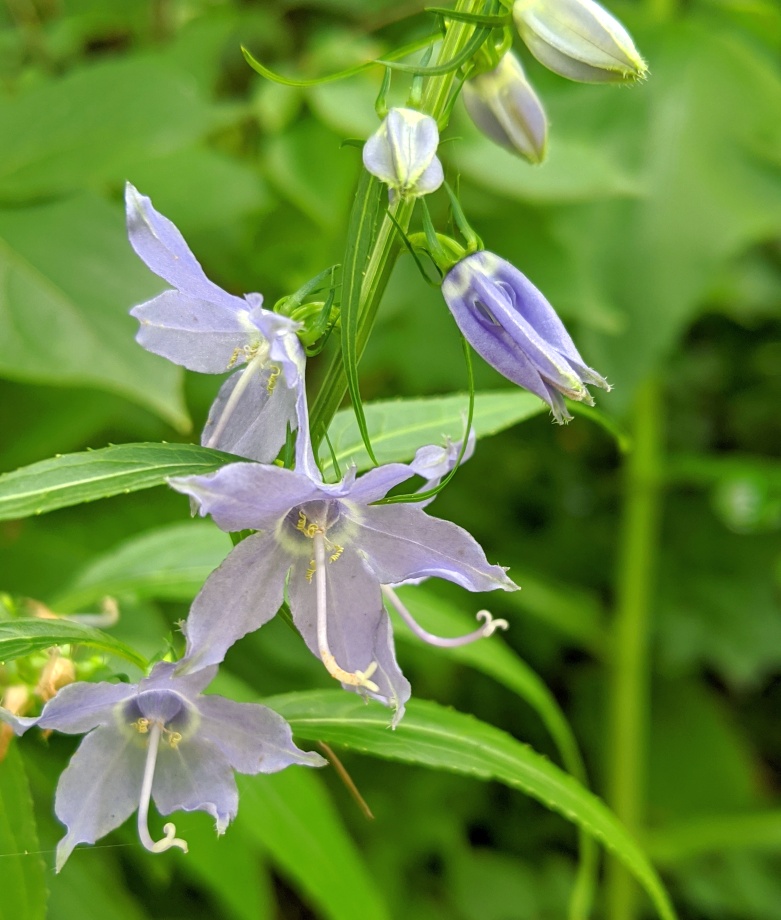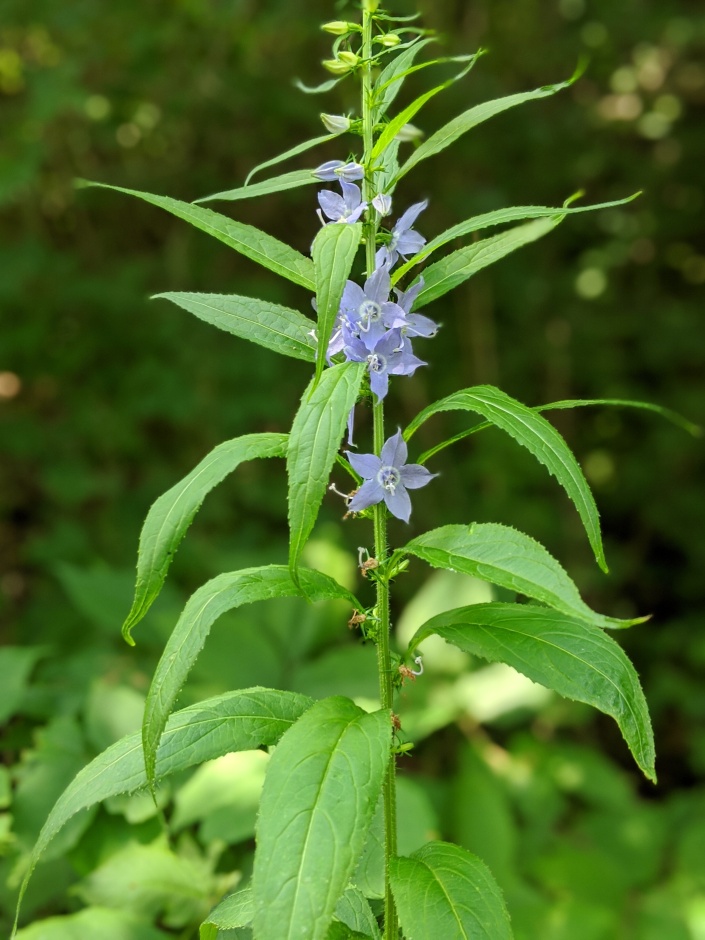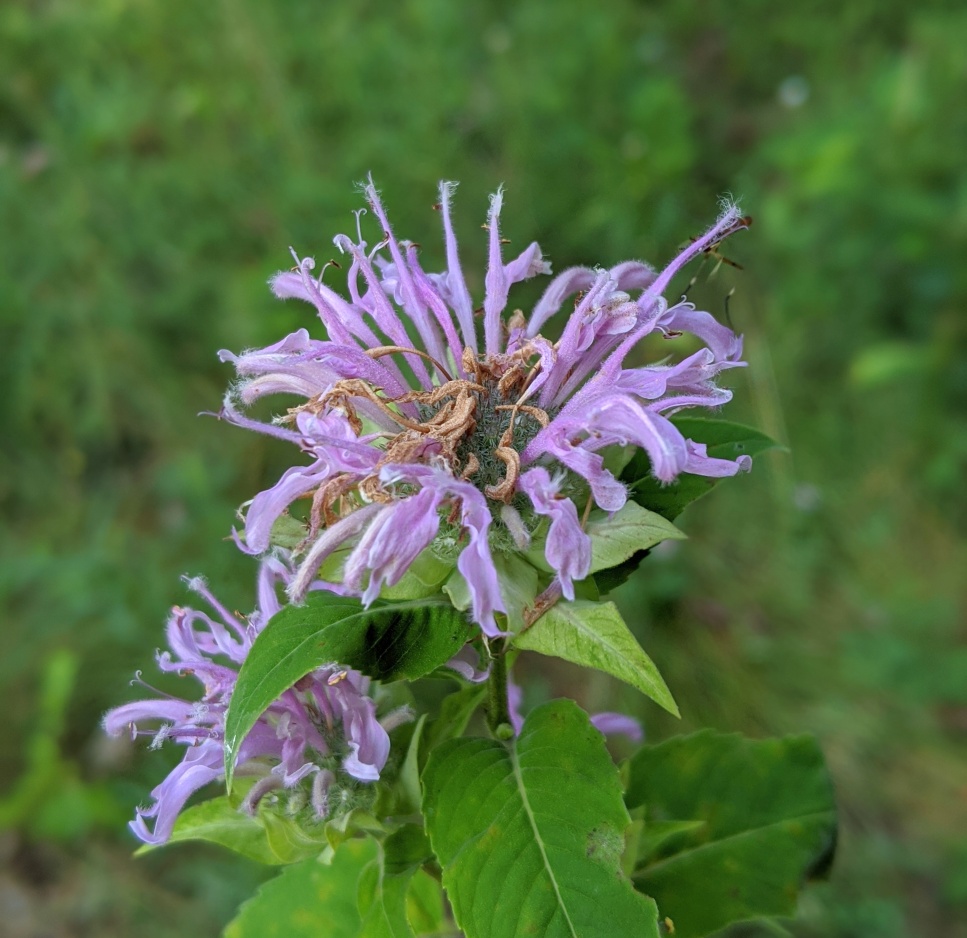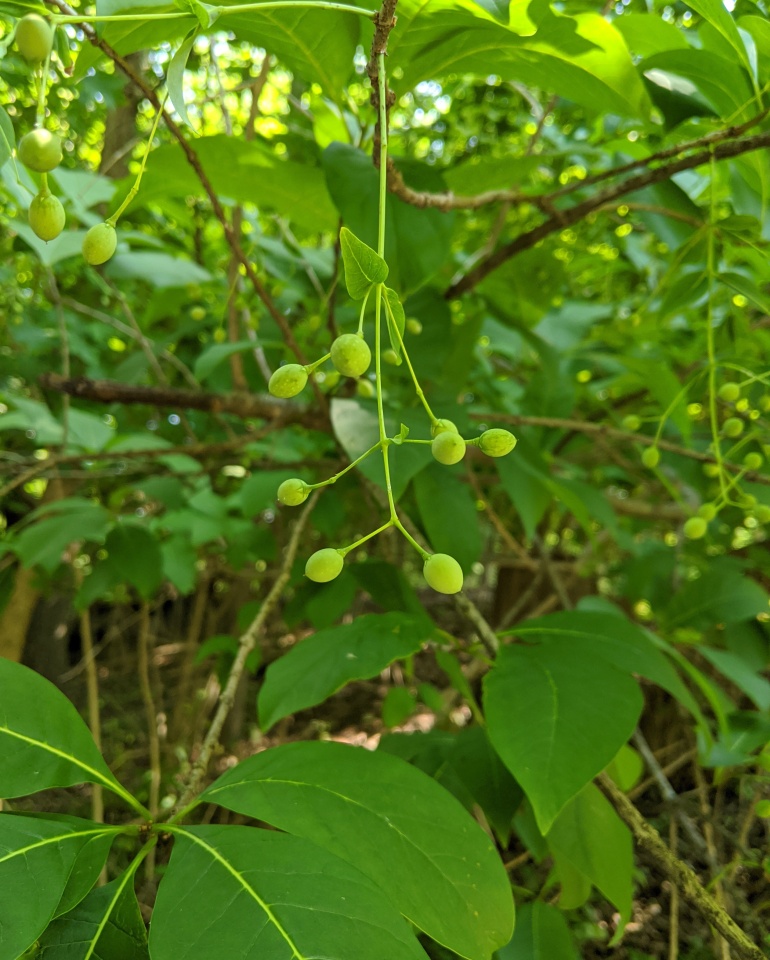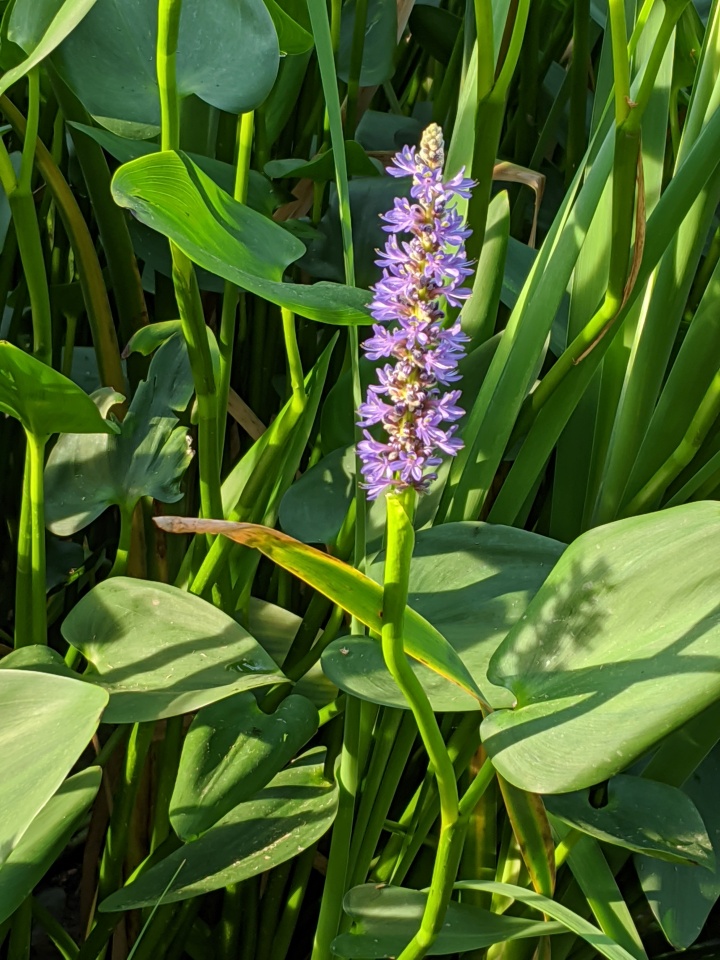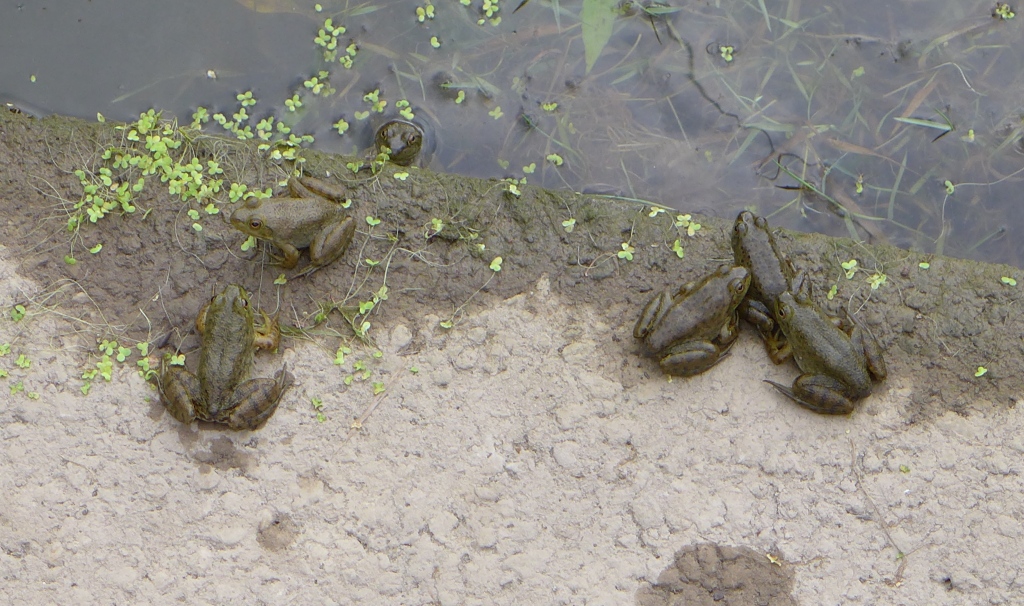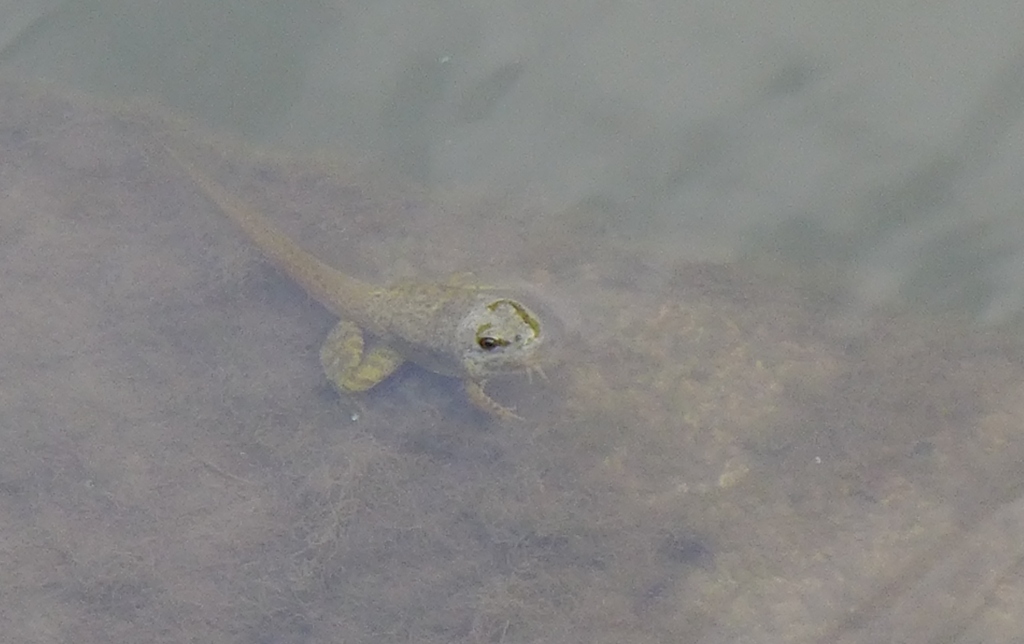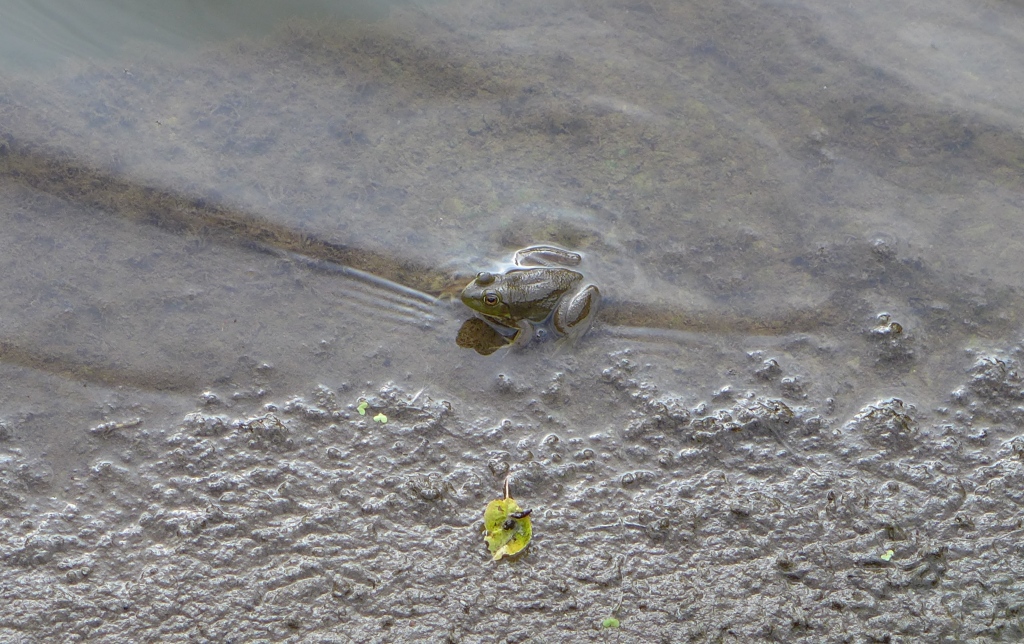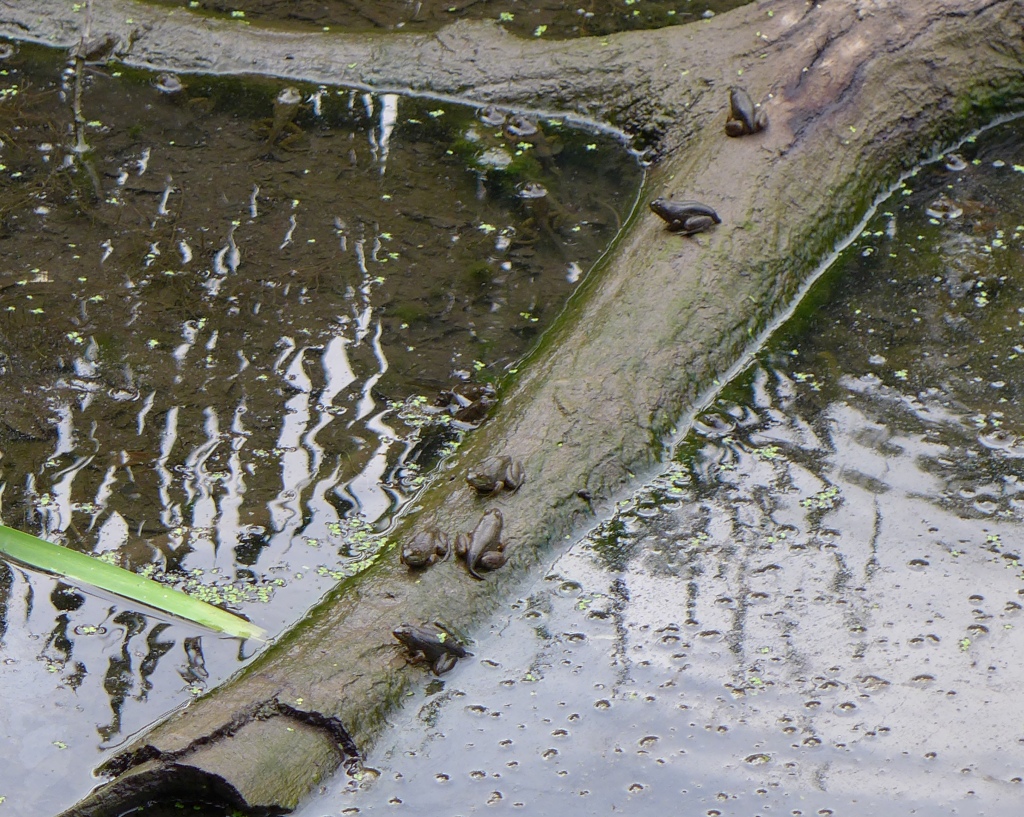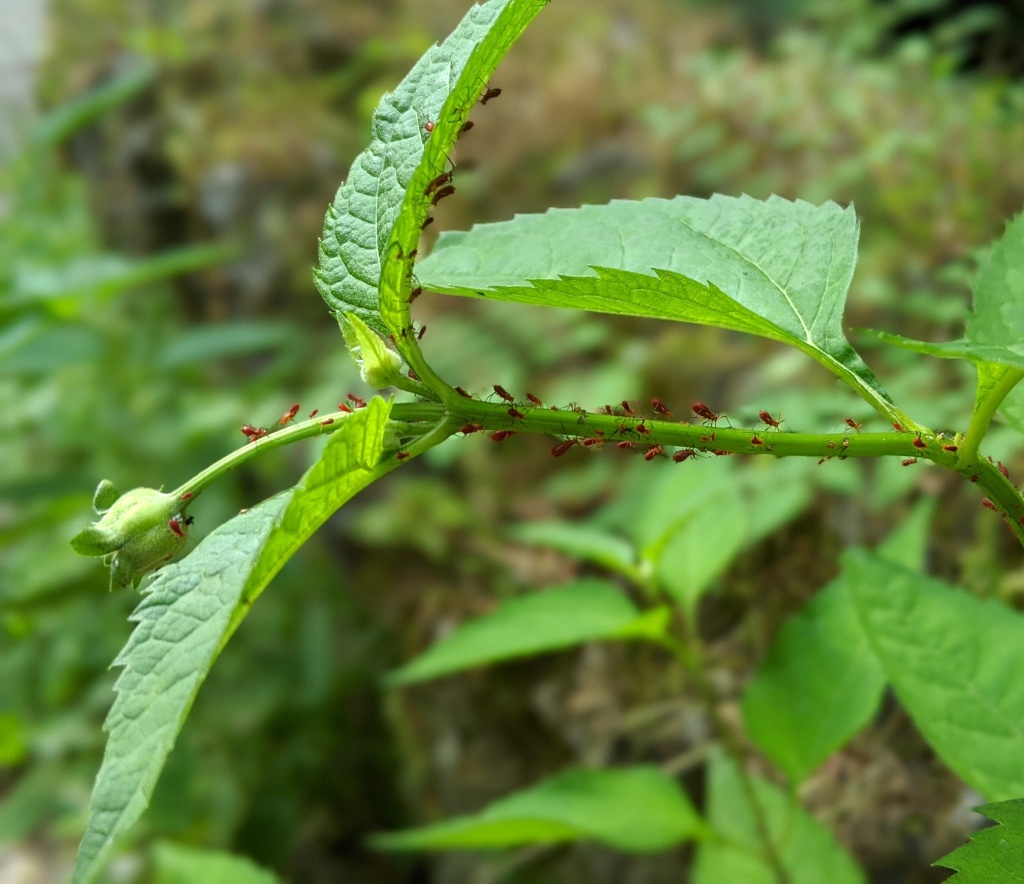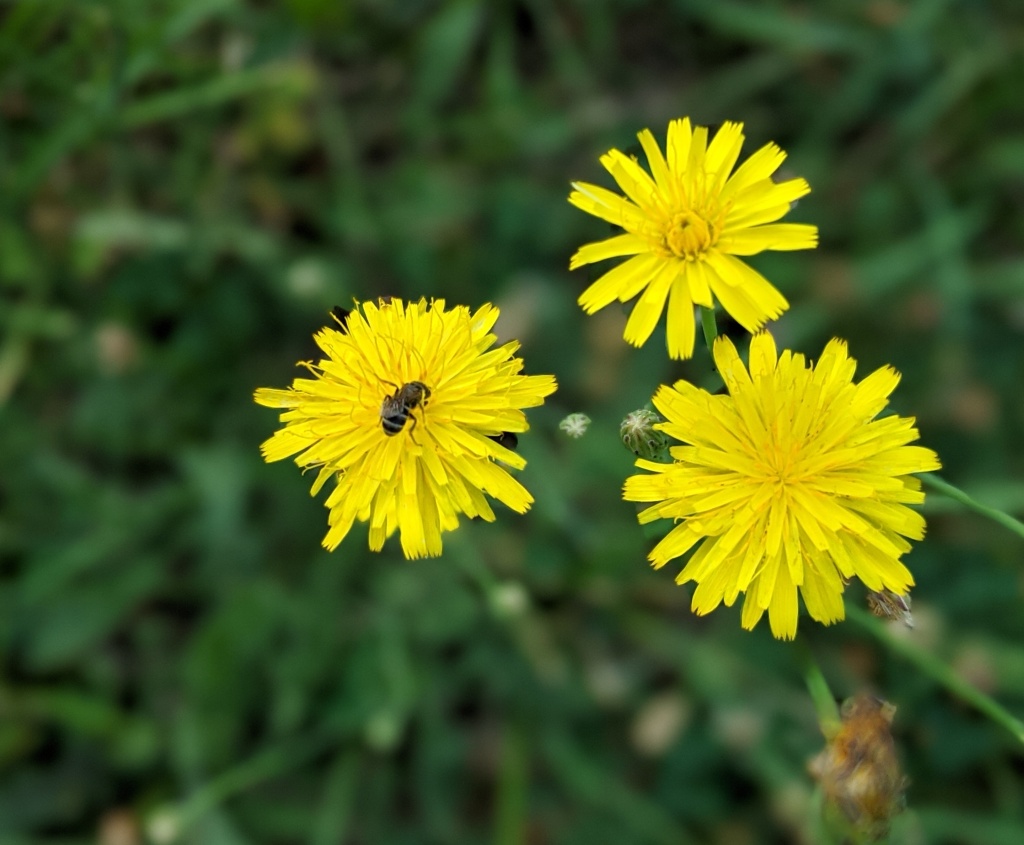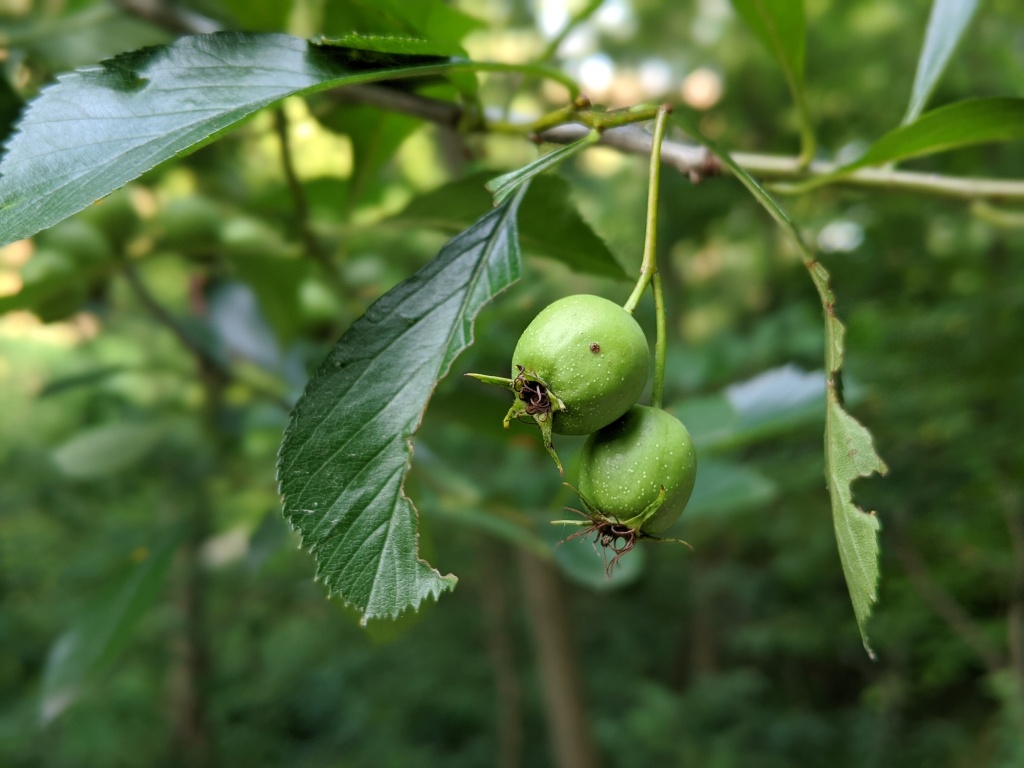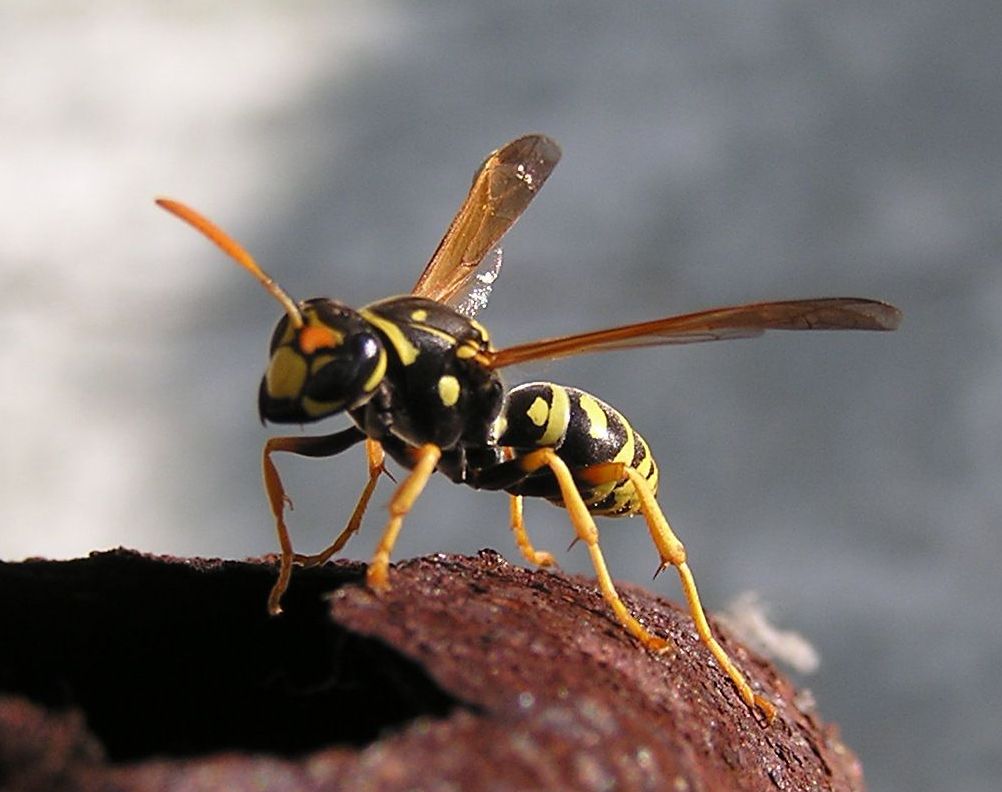
European paper wasps (Polistes dominula) are nothing new. Since their arrival in Massachusetts in the late 1970’s they expanded across eastern North America in just 20 years and reached California by 2001 or 2002. Along the way they displaced native species and were deemed invasive. If you live in an urban setting, this is the paper wasp you’re most likely to see.
To tell these apart from our native yellowjackets, Polistes dominula are larger, have orange antennae, very thin “waists” and trail their long legs behind them in flight.
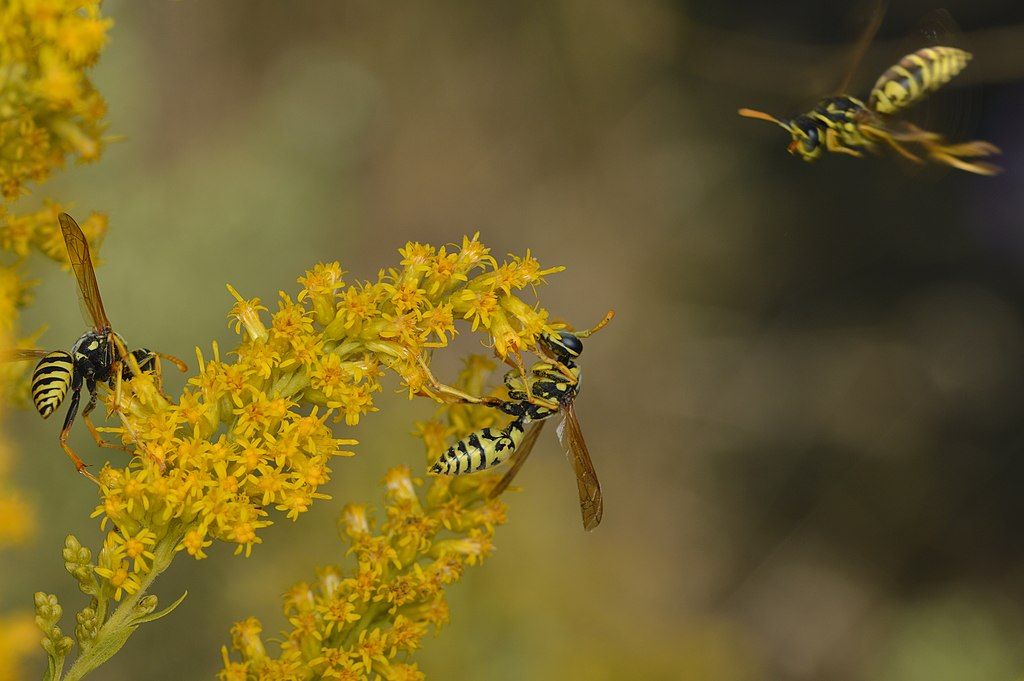
Also unlike our yellowjackets which nest in holes in the ground, European paper wasps build nests of chewed wood (paper) mixed with saliva that they attach to sheltered spots. The cells open downward.
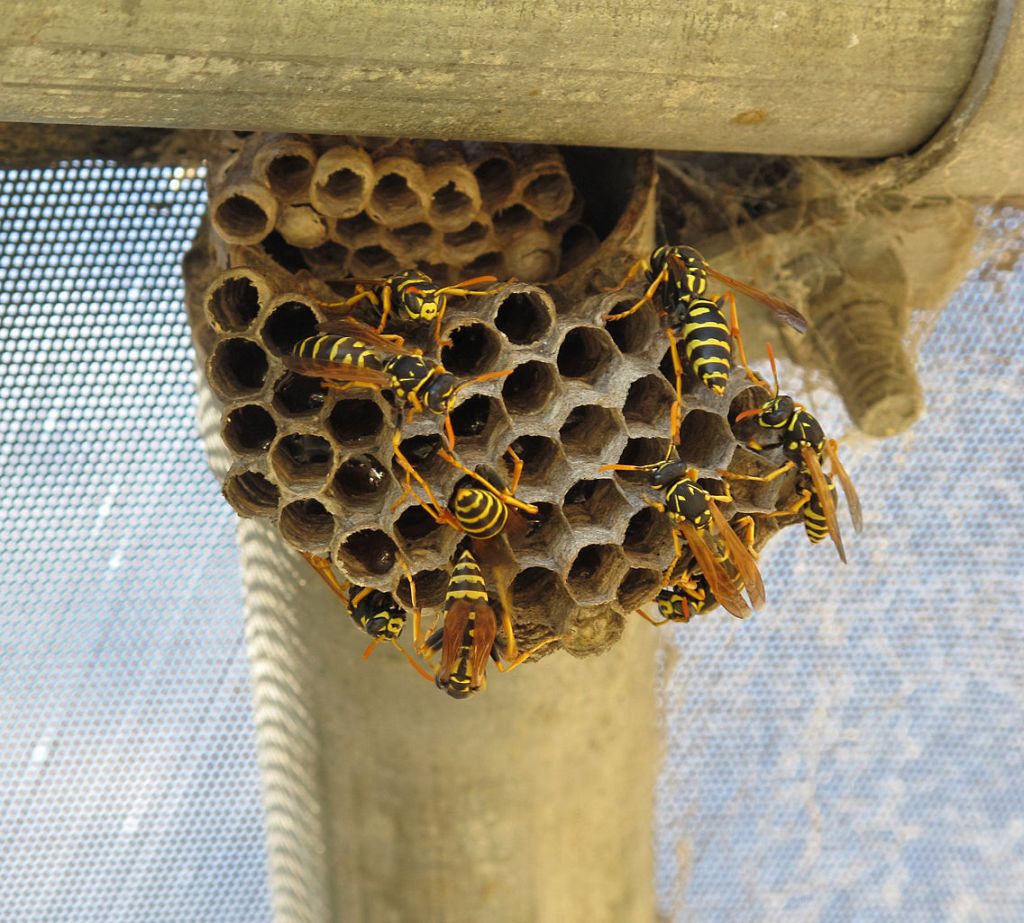
Polistes dominula wear their dominance on their bodies. Dominant females have more black spots in the yellow region above their mouths (the clypeus). Dominant males have smaller, elliptically shaped, yellow abdominal spots on their backs (dorsal) compared to subordinate males.
These outward signs can be useful as they navigate their unusual social life.
Most social insects live only with their relatives and will reject — sometimes to the point of death — unrelated individuals in the nest, but European paper wasps will join unrelated established nests as the season progresses.
… in P. dominula, 35% of the nest mates are unrelated. In many other species, unrelated individuals only help the queen when no other options are present. In this case, subordinates work for unrelated queens even when other options may be present. No other social insect submits to unrelated queens in this way.
— European paper wasp, Wikipedia
Related or not, European paper wasps attack if you get too close to their nest. Sometimes you won’t see the nest — only the wasps — as in this unusual location in DC.
Watch out!
(photos from Wikimedia Commons; click on the captions to see the originals. video from Capital Naturalist)
